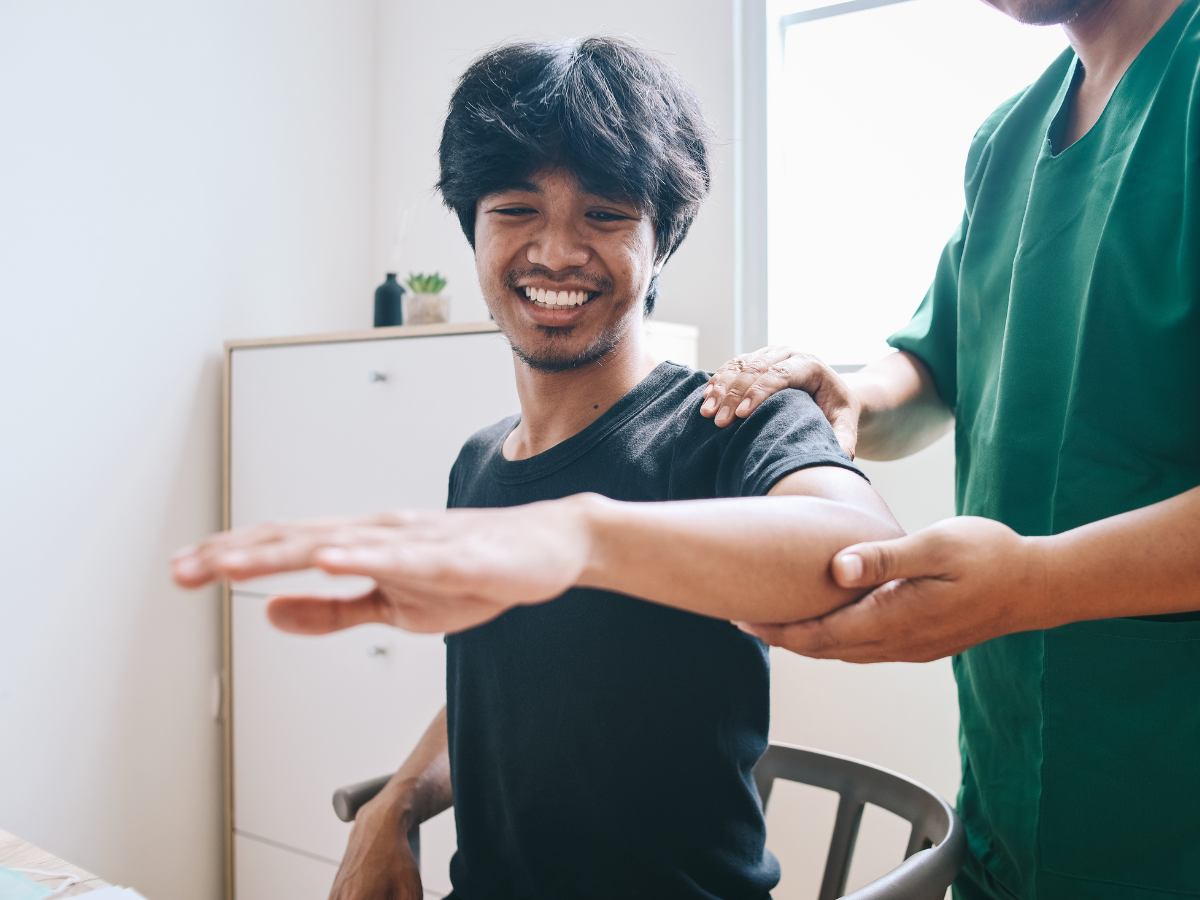
Precautions After Total Shoulder Replacement Surgery
Total shoulder replacement surgery can significantly improve mobility and reduce chronic pain for those with severe joint damage. However, the road to full recovery requires diligent post-surgical care and adherence to specific precautions. Sunshine Bone and Joint Institute (SBJI) brings you expert advice on essential steps to ensure a smooth recovery.
Recover safely from shoulder replacement surgery with SBJI’s expert tips. Learn essential precautions, from managing pain to physical therapy, for optimal healing.
- Follow Your Doctor’s Instructions
Your surgeon will provide a detailed recovery plan that includes guidelines for medication, physical therapy, and wound care. Strictly adhering to these instructions is vital for optimal healing.
- Wear Your Sling as Recommended
The sling is your shoulder’s best friend post-surgery. It immobilizes the joint, prevents strain, and promotes healing. Wear it as directed, especially during the first few weeks.
- Start Physical Therapy Gradually
Physical therapy is a cornerstone of recovery. Begin with gentle, passive movements under the guidance of a therapist to avoid damaging the joint. Over time, progress to active exercises to restore strength and flexibility.
- Avoid Lifting and Overhead Movements
Post-surgery, lifting objects, especially heavy ones, is strictly prohibited for several weeks. Avoid overhead movements and sudden jerks to protect the joint from stress or dislocation.
- Mind Your Sleeping Position
Sleeping on the operated side or flat on your back can cause discomfort. Use extra pillows to prop yourself up and maintain a semi-reclined position for better support.
- Maintain a Balanced Diet
Good nutrition plays a critical role in healing. Incorporate protein-rich foods, leafy greens, and calcium-rich options to strengthen your bones and tissues. Stay hydrated to promote overall wellness.
- Watch for Signs of Infection
Monitor your surgical site for redness, swelling, or unusual discharge. Fever and increased pain can also indicate infection. Contact your doctor immediately if you notice these symptoms.
- Manage Pain Effectively
Pain management is crucial during recovery. Use prescribed medications as directed, and consider icing the shoulder to reduce swelling. Avoid self-medication or overuse of painkillers.
- Avoid Driving Too Soon
Driving requires shoulder movement and quick reactions, which can strain the joint. Consult your doctor before resuming driving, typically after six weeks or when you regain sufficient strength and mobility.
- Attend Follow-Up Appointments
Regular follow-ups with your surgeon are essential to monitor your progress and detect potential complications early. Share any concerns or symptoms during these visits.
SBJI’s Expertise in Shoulder Replacement Care
At SBJI, our comprehensive care doesn’t end with surgery. We guide patients through every stage of recovery, offering personalized rehabilitation plans and ongoing support to ensure the best possible outcomes.
Frequently Asked Questions
Most patients recover within 3-6 months, but complete healing and strength restoration may take up to a year.
Light activities can typically resume in 4-6 weeks, but lifting, driving, and strenuous tasks should wait until cleared by your surgeon.
Ignoring precautions can lead to complications such as joint dislocation, delayed healing, or even the need for revision surgery.
Avoid processed foods, excessive salt, and sugar, as they can increase inflammation and delay healing.
At SBJI, we provide tailored recovery programs, including physical therapy, nutritional guidance, and regular follow-ups, ensuring a safe and effective rehabilitation process.

